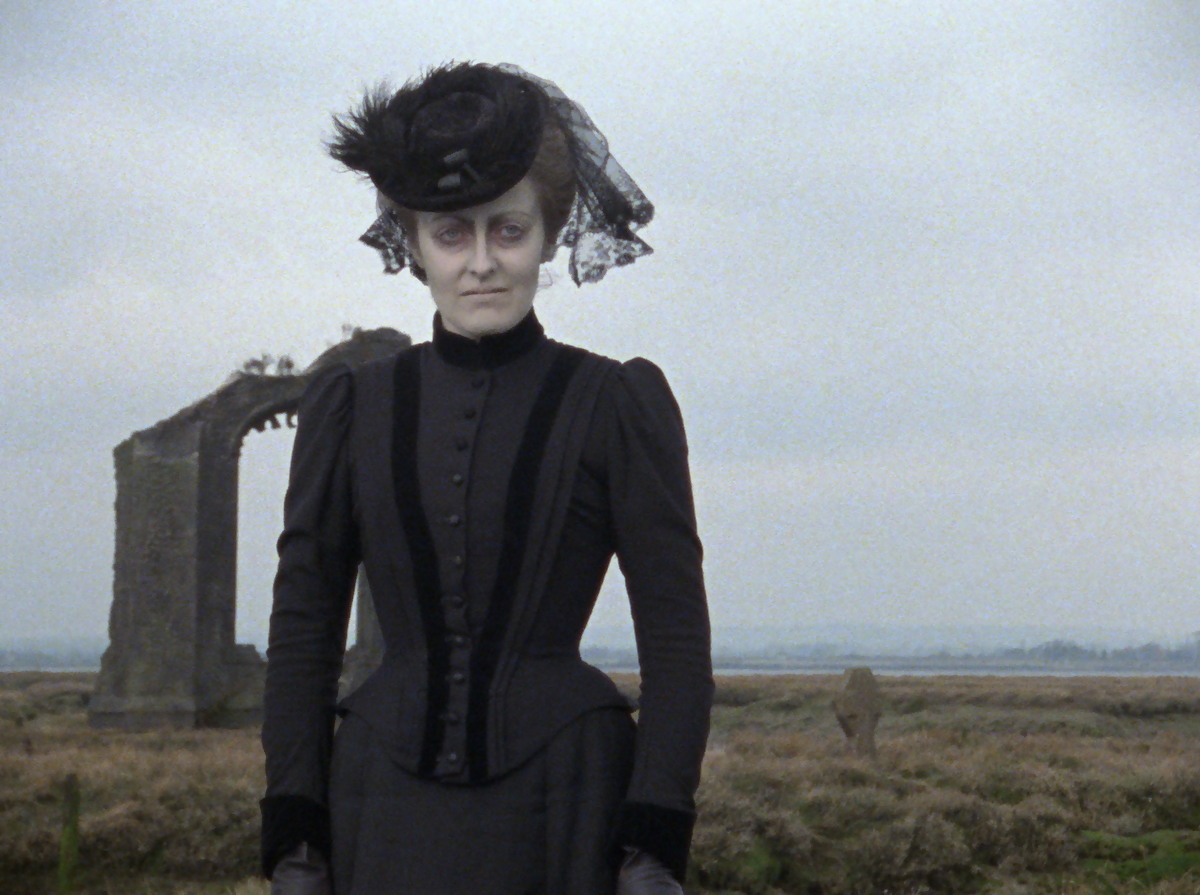
23 years before Daniel Radcliffe and Hammer Studios turned The Woman in Black into a blockbuster, ITV aired a version so scary that it traumatised a generation. And they did it on 24th December. Matt Mills recounts how one low-budget horror flick ruined Christmas.
By the 1980s, seeing a ghost story on Christmas TV was far from new. The BBC had been making festive season chillers for decades, using films like Whistle and I’ll Come to You and Dead of Night: The Exorcism to continue the tradition Charles Dickens ignited in literary form in 1843. But not even a generation of scary stories on-screen could prime Britain for The Woman in Black.
Nigel Kneale and Herbert Wise’s adaptation of Susan Hill’s classic novella aired on December 24, 1989. Then, bar one Christmas Day repeat five years later, it went untouched for three decades, until a home media release in 2020. It lived on for all of that time though – predominantly in the nightmares of the children who sat up late on the night before the merriest day of the year and caught it.
In a 2016 BFI article, journalist Lisa Kerrigan wrote: “When I saw [The Woman in Black] on its Christmas Day repeat on Channel 4 in 1994, it stayed with me, and it’s every bit as scary almost 20 years later.” Writer and fellow film critic Kim Newman echoed such trauma in a 2020 Guardian interview.
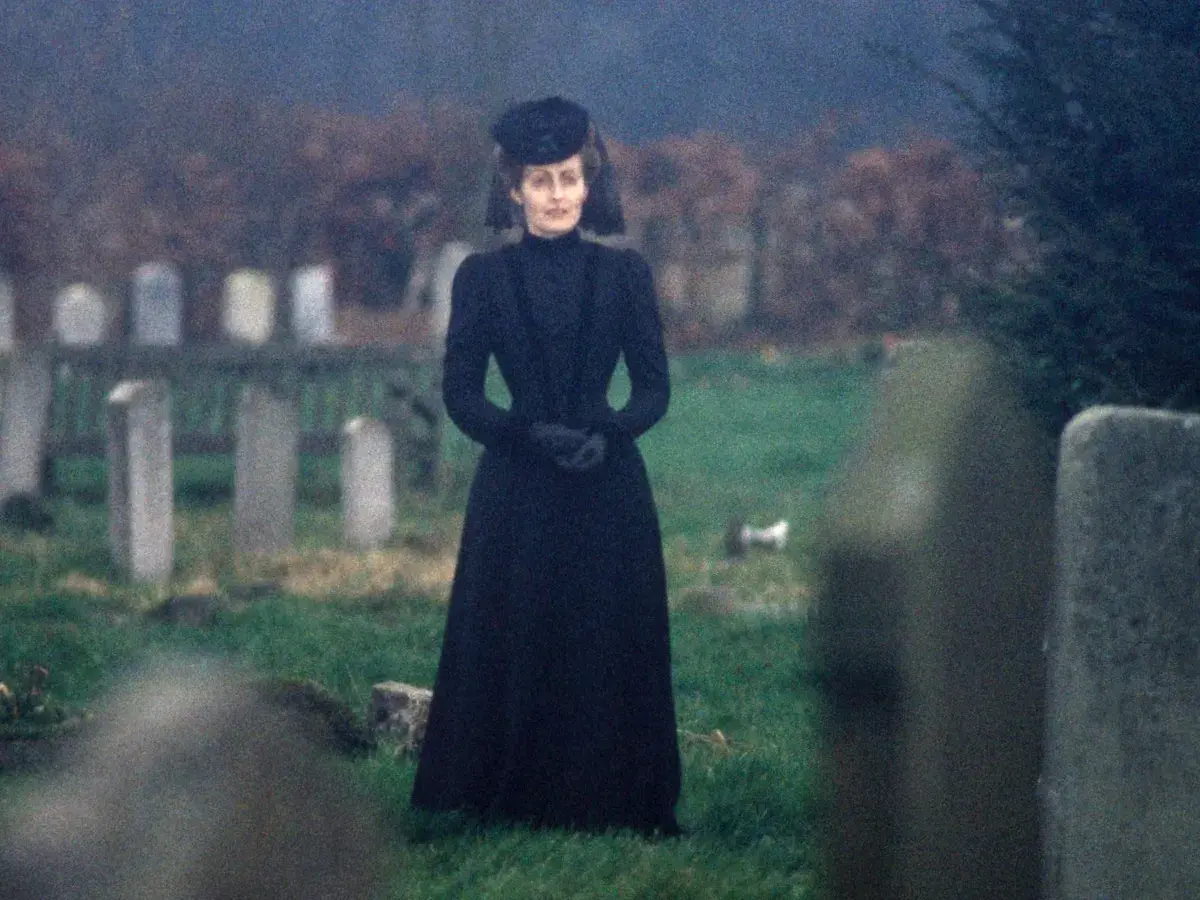
Credit: ITV
“I saw it when it was first shown,” he said. “Christmas Eve with my mum and dad. We all just wanted to watch a spooky ghost story. But there were after-effects, a mood that carried on after the film ended. You wake up next morning, Christmas Day, you’re still scared.”
He concluded: “The Woman in Black ruined Christmas.”
It reads like a mystery thriller. How was something so low-budget, and that premiered on primetime ITV, able to terrify so many?
If you’ve read the original Woman in Black, first published in 1983, then the unnerving power of its first film adaptation may not surprise you: Susan Hill’s ghost story remains the most psychologically distressing entry into its genre since Victorian times. In it, solicitor Arthur Kipps is sent by his employer to Eel Marsh House, a barren mansion at the end of a causeway in north-east England, to settle the estate of the recently deceased hermit Alice Drablow. Then he’s quickly haunted by a spectre in widowers garb, which has long had a mysterious stranglehold on the local village.
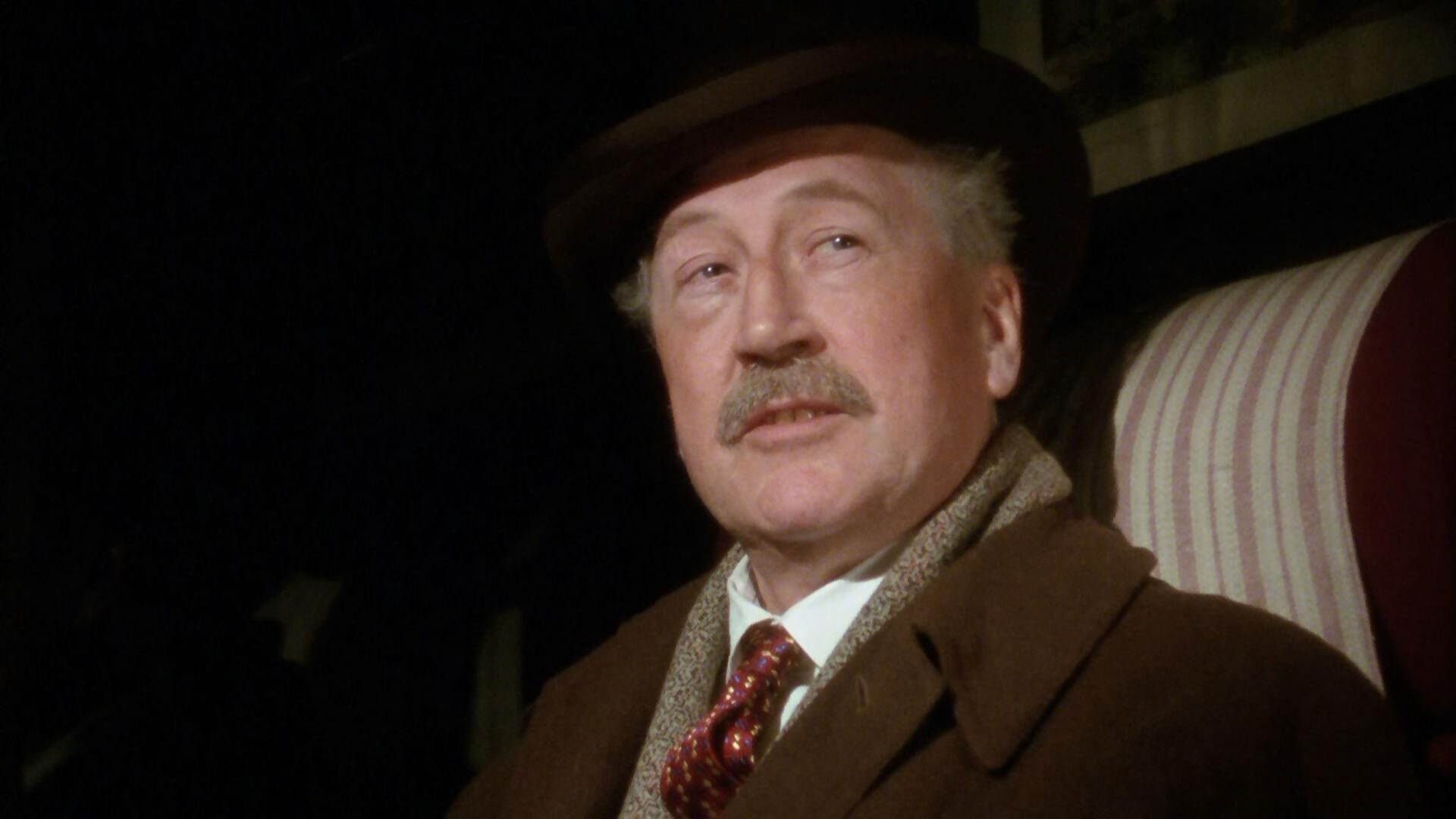
Credit: ITV
Bar insignificant aesthetic changes (like turning Kipps’ surname to Kidd and switching the gender of the dog he’s lended, Spider), the Woman in Black film is a line-for-line retelling of its source material. Every scene and story beat is identical. That is, until the final half an hour.
The TV adaptation somehow makes its twist even more depressing than the one in the book. In both versions, it transpires that the titular ghost is of Alice Drablow’s sister, Jennet Humfrye. Humfrye had a son out of wedlock that Drablow and her husband adopted. The child died in an accident, causing Humfrye to waste away in grief before dying. Every person that sees her ghost near Eel Marsh House will suffer having their firstborn killed.
In the book, Kipps has no children, leading him to assume he’s broken Humfrye’s curse. Then, years later, the woman in black shockingly reappears before him; his wife and young son both die in a freak accident at the same moment.
The film rejects this ending for one that’s somehow even more gruesome. It drowns Kidd and his entire family by having the woman in black plummet a tree branch onto the rowing boat that they’re in while holidaying. Merry Christmas everyone.
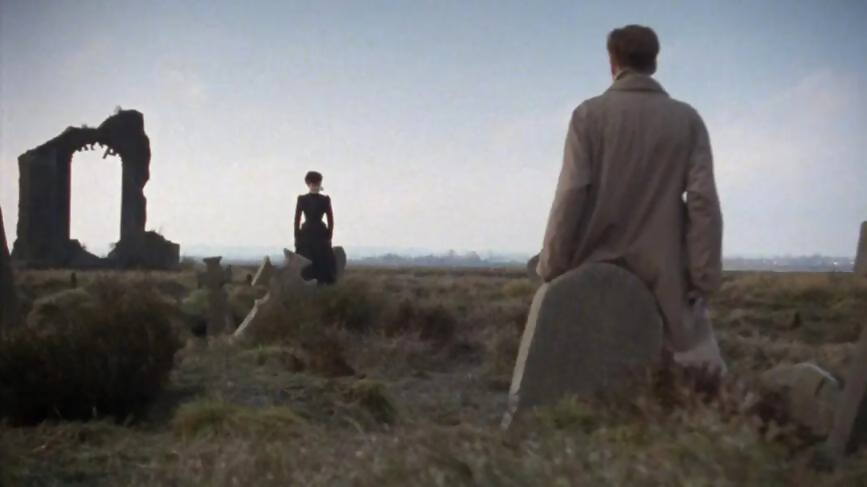
Credit: ITV
However, it wasn’t the plot deviations of The Woman in Black that sapped Britain’s merriment – at least, not by itself. Half an hour before then was the first moment that took a savage left turn from the book. After a scare in Eel Marsh House, Kidd passes out, only to wake up back in the village, seemingly safe in a bed at the inn. He reaches into his pocket to find a toy soldier that belonged to Humfrye’s son. There’s some cliched child laughter and then…
Immediately, there is a jumpcut to an intimate closeup of the woman in black, looming over Kidd and only pulling herself closer and closer to him. The sole soundtrack is her ear-splitting screaming, as well as Kidd wailing his lungs out in terror. The scene only ends when the camera has panned so close to the ghost that it has to fade to black. Then there’s an ad break.
This sequence united a nation. At one moment in time, everybody in the United Kingdom leapt out of their skins. It has frequently been called one of the freakiest jump scares ever filmed: The Guardian, The Telegraph and countless comments under the moment’s upload to YouTube all agree. “I was 10 years old when I first saw this in ’89,” one user wrote under the video simply titled “The Woman in Black (1989) – ‘that’ scene”. “My mum had to scrape me from the living room ceiling.” Another says: “To this day that woman’s face during this scene is still probably the single most terrifying image I have ever seen in my life.”
To appreciate why that jump-scare is so frightening, you need to take the rest of the film into account. For its first 77 minutes, The Woman in Black is a glacially paced burn, not to mention ominously quiet with next to no score. The ghost only ever appears through editing trickery that even Georges Méliès would have had access to, and is never an imminent threat as much as she’s an omnipotent stalker in the distance.
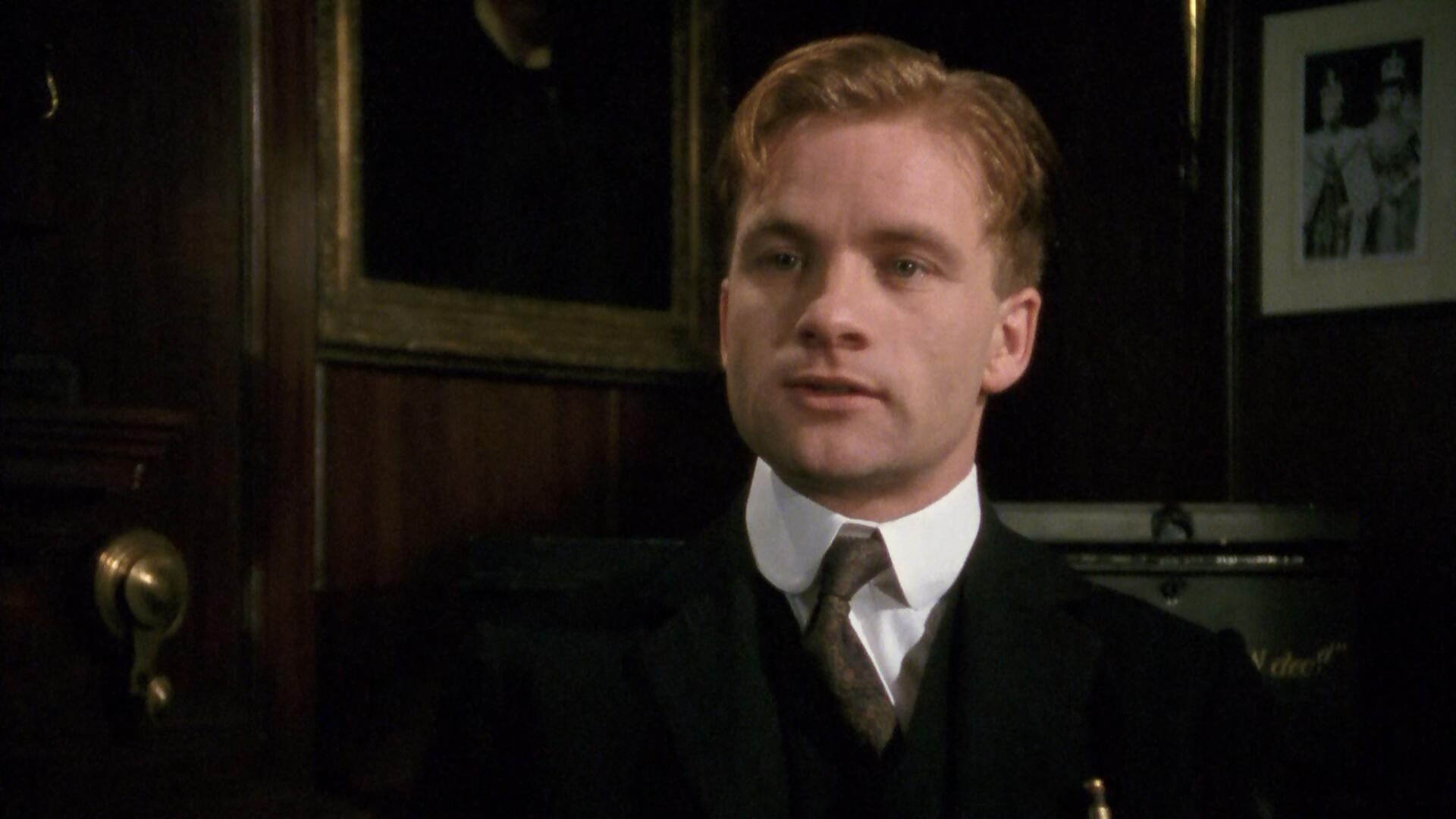
Credit: ITV
When Kidd first sees the woman in black, she’s at Drablow’s funeral. Then she quickly reappears outside. For much of this initial haunting, she’s just… there: watching from afar, unblinking, with her skeletal features not at all hidden by that black veil. Unless you’ve read the book, you have no clue as to her powers, her intent, or how, why and when she’ll approach. And it isn’t until “that” scene that she becomes more than merely a hate-filled watcher in the wings.
Adding to the uncertainty is Kidd himself. Adrian Rawlins (now better known for his parts in Chernobyl and Harry Potter) wisely plays the part as an unassuming and likeable family man: there’s no dirty little secret or sordid past – nothing that can tether him to his raven-robed antagonist. He’s just a person, in the same way that you, the viewer, are just a person. Nobody, no matter how wholesome, is safe from the possibility of opening their eyes on the next morning (Christmas morning if you watched the original broadcast) to see a screeching spectre inches from their face.
There’s a timelessness to the horrors of The Woman in Black that let them haunt way beyond 1989. Thanks to it not being an effects-driven story, instead using atmosphere and just one sudden closeup to freak its audience out, it’ll never really age. And the older and grainier the footage gets over time, it’ll only look more Victorian and draconian. With the potential to frighten forever, it’s a gem of pants-shittingly scary British filmmaking.



